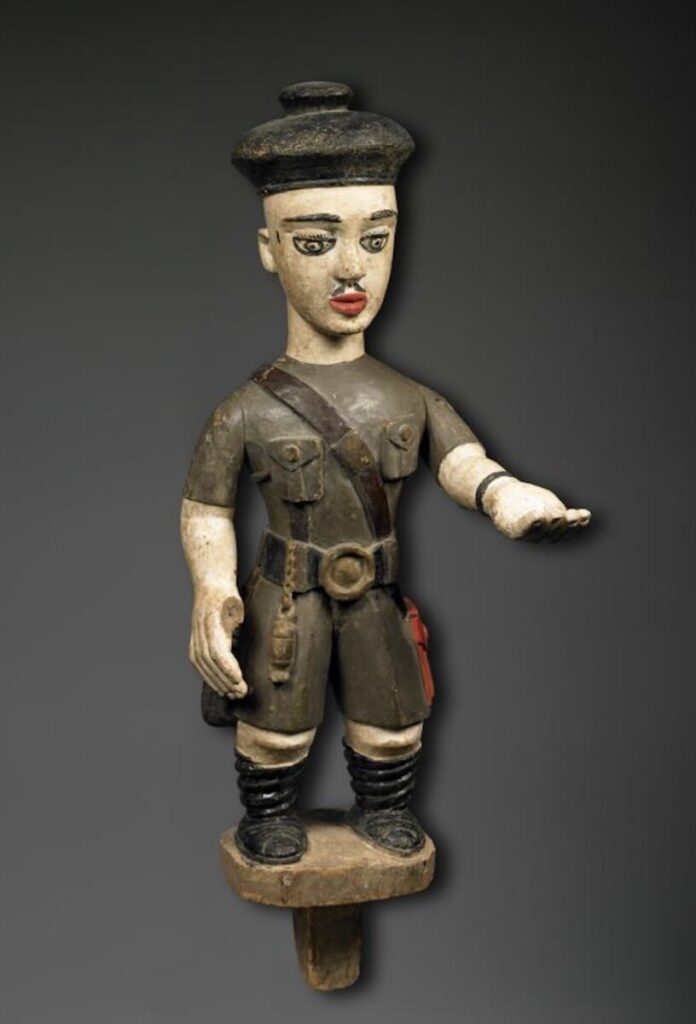Hannah Im | Discussion Post 10
While the Colonial Figure Puppet is not from the Baroque period, the context in which it was made and the meaning it carries is similar to that of other pieces of Baroque art. While Baroque objects tend to have a religious theme, many pieces reflect this period’s political and social climate, such as portraits of Louis XIV and maps during the Dutch Golden Age. When looking beyond Baroque’s Eurocentric origins, many pieces reflect the effect of imperialism on various global communities, such as Japanese namban screens and paintings of curiosity corners and cabinets. Likewise, the Colonial Figure Puppet functions as both a prop used by the Anang Ibibio’s drama society and as a reflection of imperialism in mid-20th century Africa.

Both the namban screens and the Nigerian puppet depict the presence of foreigners in Japan and Nigeria, respectively, with certain amounts of criticism. While the screen physically unfolds a story about Japanese and Portuguese relations, the puppet is a part of satirical performances about European imperial corruption. The visual elements of both help tell a story about the political climate of those times.

This puppet may be featured in a collection about Baroque African art as an extension of how the Africa-Europe relationship changed from the 1600s to the 1800s. Many African artists incorporated the Christian religion into their art through diptychs and crucifixes during the Baroque period. Others still responded to the European African imaginary. This work is valuable within the context of the early modern period because it represents the autonomy of Nigerian artists in a time of imperialism. This piece acts as a foil to race-crafting, an idea brought up in Claudia Swan’s lecture. The puppet demonstrates that those of African descent are not simply points of comparison to elevate the white imperialists, but rather artists in their own nature.
https://collections.carlos.emory.edu/objects/17838/colonial-figure-puppet
